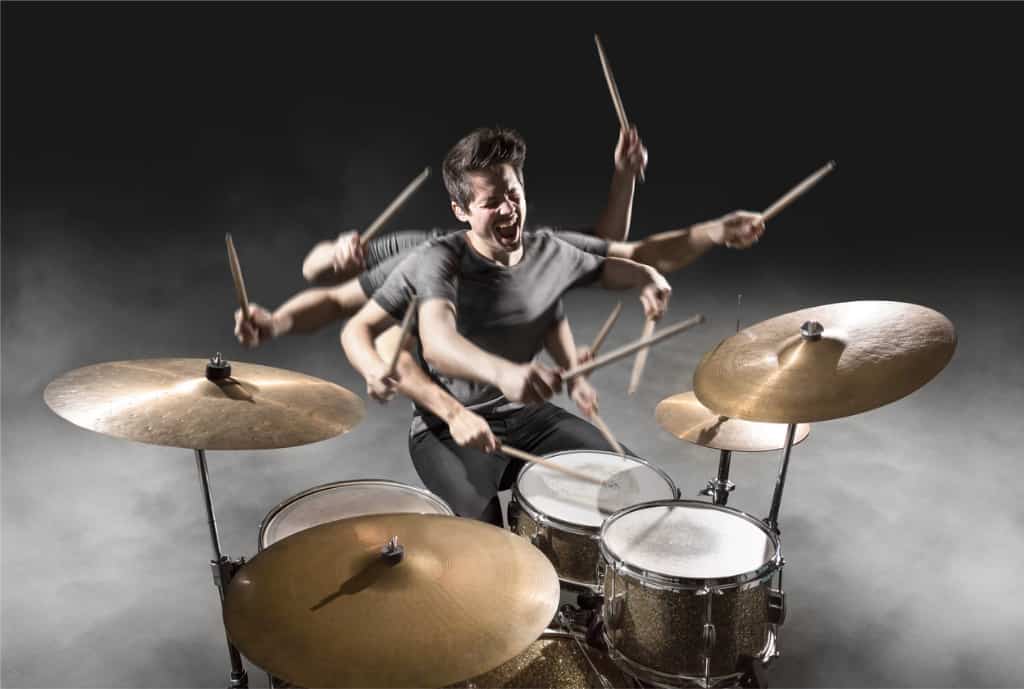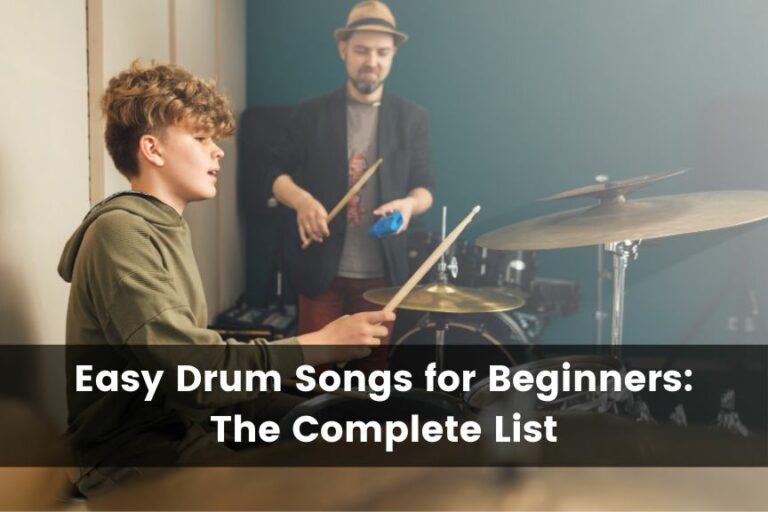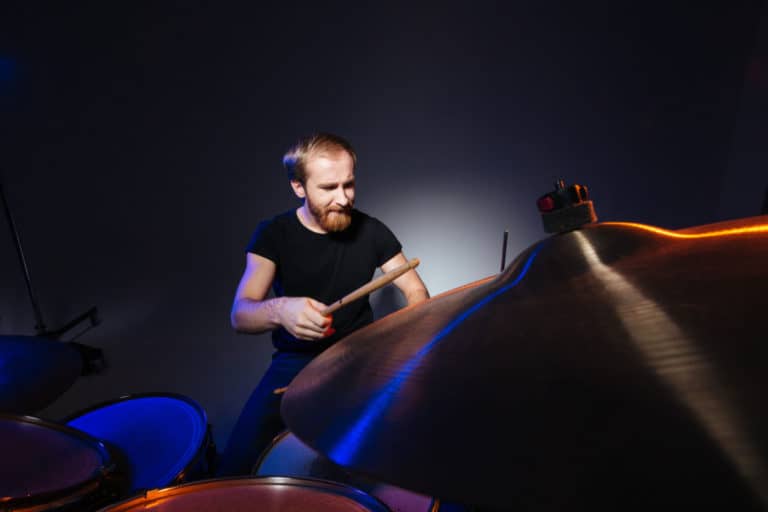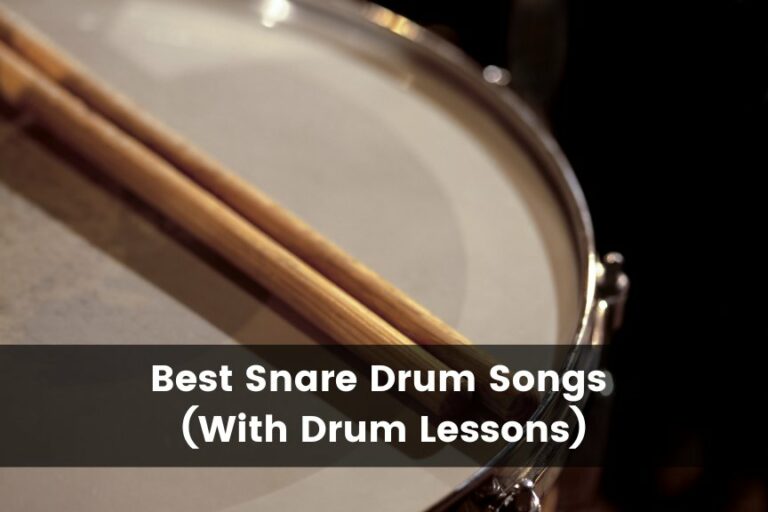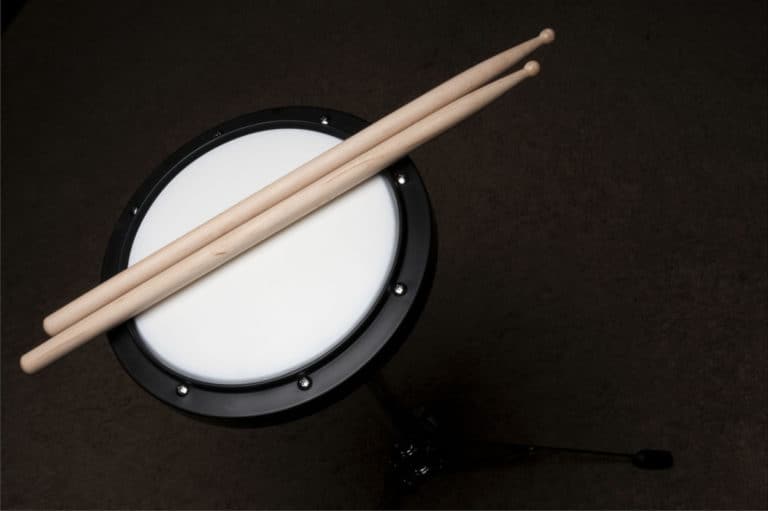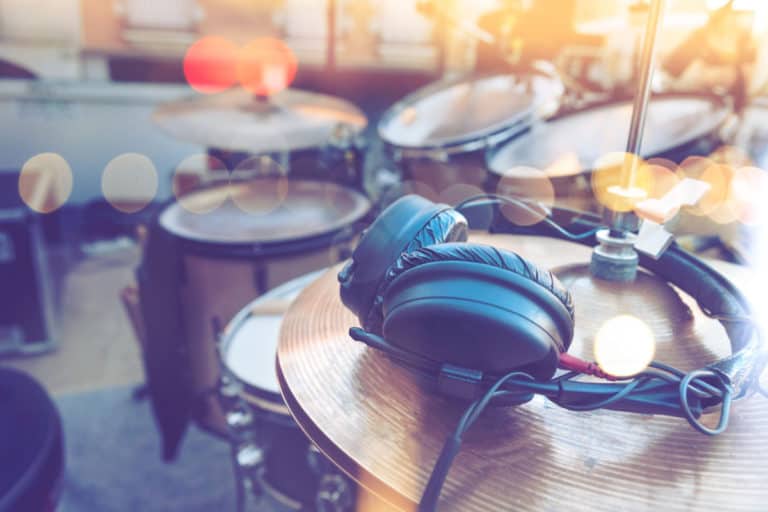How Do Drummers Multitask?
I bet you’ve also been wondering how and why drummers are able to move both arms and legs at the same time and yet can manage all of their limbs independently. Here is some research on the science behind that.
Most drummers have independent coordination between their limbs, which means their brains develop neurological connections that support such kinesthetic interdependence. This takes time to achieve; some people take longer than others.
Basically said, experienced drummers do have different brains. That’s what makes this topic interesting as to what exactly happens in their heads differently to the rest of the people. Here is the science behind and how you can also develop these qualities.
The Science Behind Multitasking on Drums
First of all, the term “multitasking” isn’t quite right as it’s used to describe actions that aren’t practiced as “one thing”. A better term for it would be “independent coordination”.
Science indicates that the drumming stimulates and activates the brain in more complex ways than people are aware of.
Drummers can, in fact, be more ingenious than any of their less rhythm-oriented bandmates.
According to the Karolinska Institutet in Stockholm, drummers’ brains work differently than most. They possess incredible problem-solving skills, a correlation between the parts of the brain that handle problem-solving and rhythmic timing.
There was one study in which drummers were asked to keep a consistent beat whilst taking a 60 question intelligence test, and the ones with the best answers were also able to keep the beat at tempo.
Professor Frederic Ullen of the Karolinska Institutet in Stockholm has found that there is a high correlation between timekeeping and the functioning parts of the brain that is used for problem-solving: “The rhythmical precision of brain activities which is observed when a subject keeps a constant beat is likewise important to the problem-solving capacities measured with the intelligence tests.”
Research institutes like the GE Healthcare Institute are working on visualizing all the connections happening in the universe of our heads (there are trillions).
As it has been recorded with fMRI (functional magnetic resonance imaging) in scientific studies that drumming stimulates large areas of the brain. There are indications that powerful cognitive activities are occurring, and auditory information is translated, with the motor coordination being managed by the brain to carry out a constant metric rhythm.
When playing the drums, your arms and ears pulse to the rhythm. These actions light up regions of neural connections in your brain. As you begin moving to the beat, your motor cortex begins to activate. When you then sink into a rhythm, your auditory cortex – conveniently located by the ears – perceives the music that you create.
How do you become better over time? Myelination. Myelin lies around the axon of your neurons and swells when you’re in the learning process. The more you practice, the more myelin growth. This results in stronger connections in the brain leading to better retention of skills like the timing of a note.
This leads to the assumption that by improving your coordination behind the drum kit, you can also improve your physical coordination throughout all other aspects of your life, which includes your ability to “multitask” and even boost your athletic abilities!
According to the GE Healthcare Institue, these scientific findings are only the first measure of what is known about musicians’ brains.
How to Develop and Improve this Skill
Being able to coordinate your movements around the drumset independently doesn’t necessarily come out of nowhere. You can develop that skill, or if you already gained some of that, improve it further.
Assuming that you want to play a drum part that is very complex and requires more limb independence than you already have, you can simply learn it by considering the following aspects:
- Repetition and practice. Being patient is essential here.
- Chunking down into simple parts and learning them one by one.
- Beginning simple and not proceeding until you’ve mastered those simple pieces first.
- Playing until it doesn’t feel clumsy.
- Don’t rush! Practicing slowly and watching your technique is critical. This helps you to play faster with less effort (which you would have without a well-developed technique) in the future.
- Use the metronome.
- Vary. For example, playing something else on the hi-hat while maintaining the rest. Or moving the bass drum pattern one beat backward. The possibilities are endless, and it depends on the drum part you’re practicing.
After some practice, your brain will connect those pieces and develop necessary neurological connections that will help you learn other intricate patterns quicker in the future. Just continue to practice, and the most important thing is: Enjoy it!
Basic Independence Exercise on Drums
You don’t know what exactly to exercise? These are some useful tips to help you get started. As always, make sure that you’re already warmed up and got your libs working.
Choose an ostinato for your feet which you keep continually running, no matter what the hands are playing, for example:

Now combine this with 16th notes on the snare, using different sticking patterns:



Remember: Use a metronome, start slow, and be patient.
Having this basic concept in mind, you can always expand it as you like, for example, replacing the 16th notes in the hands by triplets or quintuplets. As stated above, the possibilities are endless.
Independence vs. Interdependence
Right at the start, I wrote about “kinesthetic interdependence”, but for the rest of the post, I was mentioning independence. What is going on here?
Let me first show you the distinct meanings of each word.
Independence: “the fact or state of being independent”
Interdependence: “the dependency between two or more people or objects on one another” (from Old French entre- or Latin inter ‘between, among’)
This sounds rather contrary, right? …Right!
Austrian drummer Thomas Lang talks about this question on his “Creative Coordination & Advanced Foot Technique” DVDs. According to him, independence and interdependence are different states of mind. And after a few minutes of thinking about what he said, I agreed to this. When you think about it, the only difference between interdependence and independence is how you see what you are playing. If you look at what each limb does as a separate rhythm, then that is independence. If you look at each limb as part of a larger rhythm, that’s interdependence.
I assume that technically all playing is independent because there is no cause and effect between one limb and another. Only one exception (that comes to mind) is that a particular pattern has become an irresistible habit. This happens very often with new drummers. They get used to playing eight on one hand and four on the floor as far as it is anchored in their muscle memory. So when they play eight on one hand, they automatically (against their will) start playing four on the floor (or vice versa). Again, the cause-effect relationship between the two limbs exists only in the head.
Both independence and interdependence fall under the larger category of coordination. So why did we take the trouble to find these subcategories? I suspect it is because the way we think about the role can influence our ability to play it.
Each limb has a rather complicated part to cover, none of the parts sounds the same, and it all happens at once. If you tried to play this by processing all the different pieces together as one unit, you would overload your brain. So you’re thinking about each part individually because it’s easier to digest that way. Once you have each piece down, it’s about putting them on top of each other until they all fit in their right places. I would call that independence because each rhythm is considered separately.
An example of interdependence is when you play a polyrhythm with one hand playing one thing and the other hand playing another. These are different rhythms, but they are perceived as a unit. It’s hard to think two on one limb and three on another, so instead, it’s considered as one coherent whole. Glenn Kotche played a piece by minimalist Steve Reich entitled “Clapping Music” on the DVD of the Modern Drummer Festival 2006. He talked about how he saw it as a duet between the left and right hand. This is a perfect example of interdependence. Both rhythms are part of a wholesome unity; they do not exist on their own.

